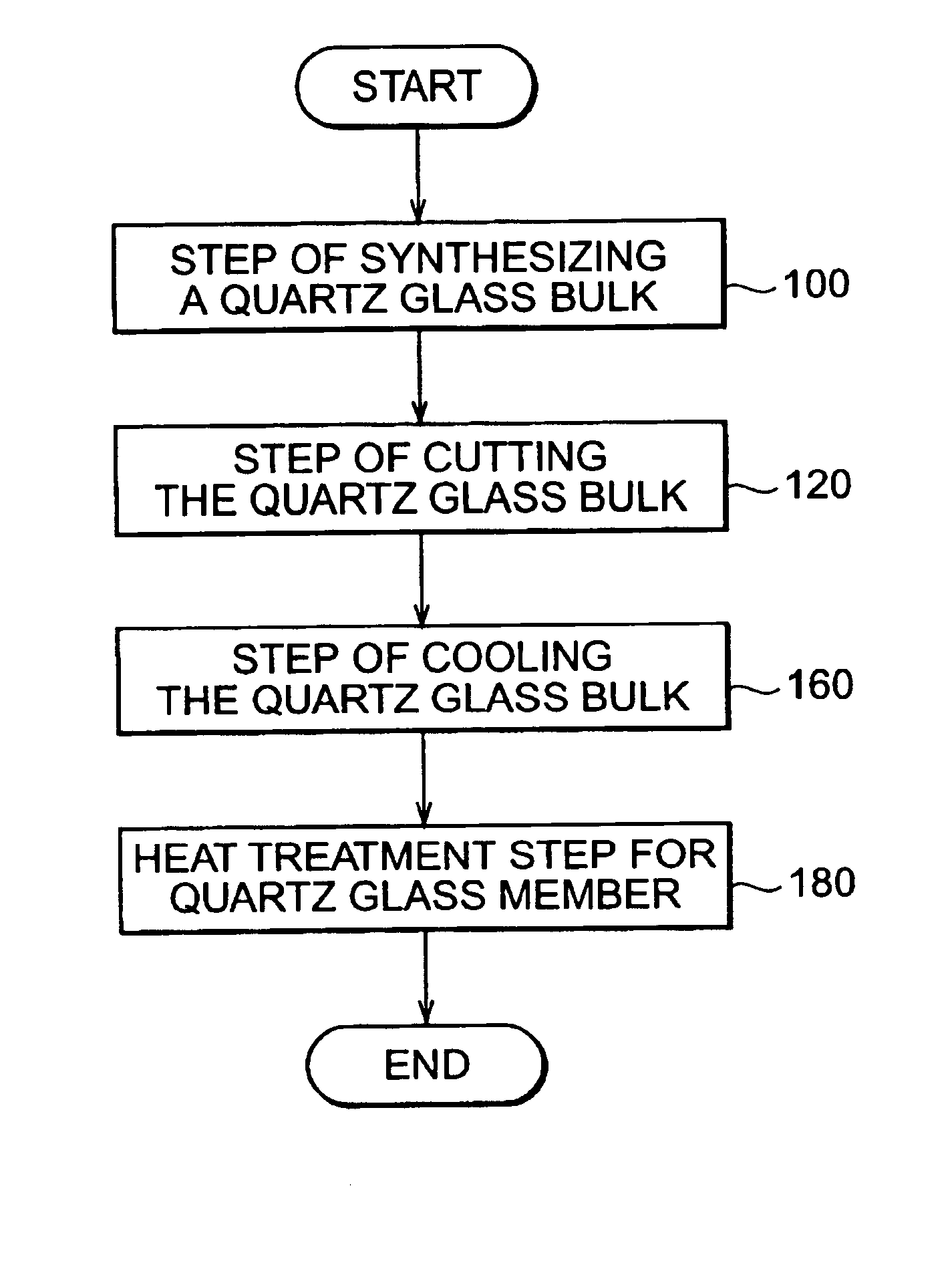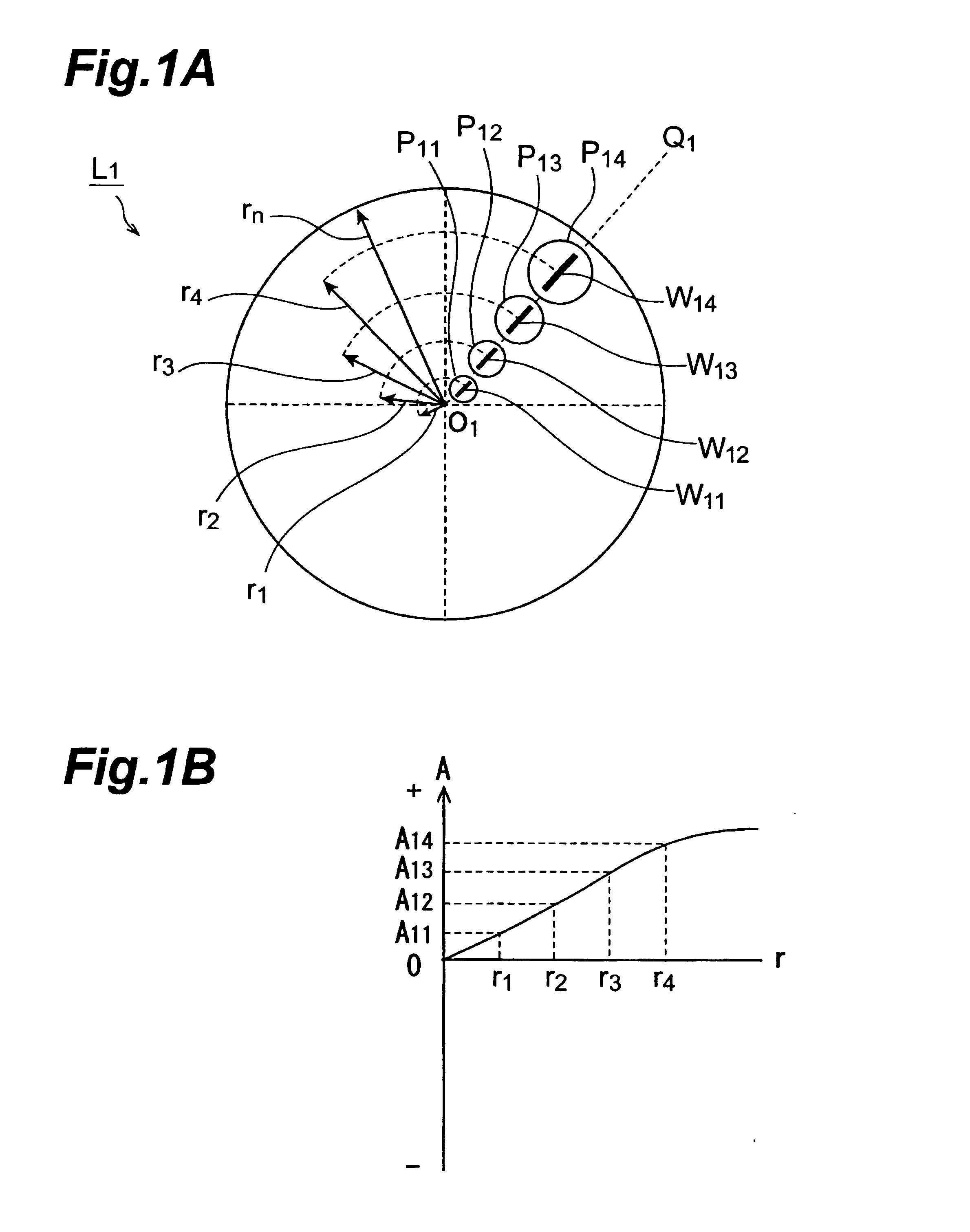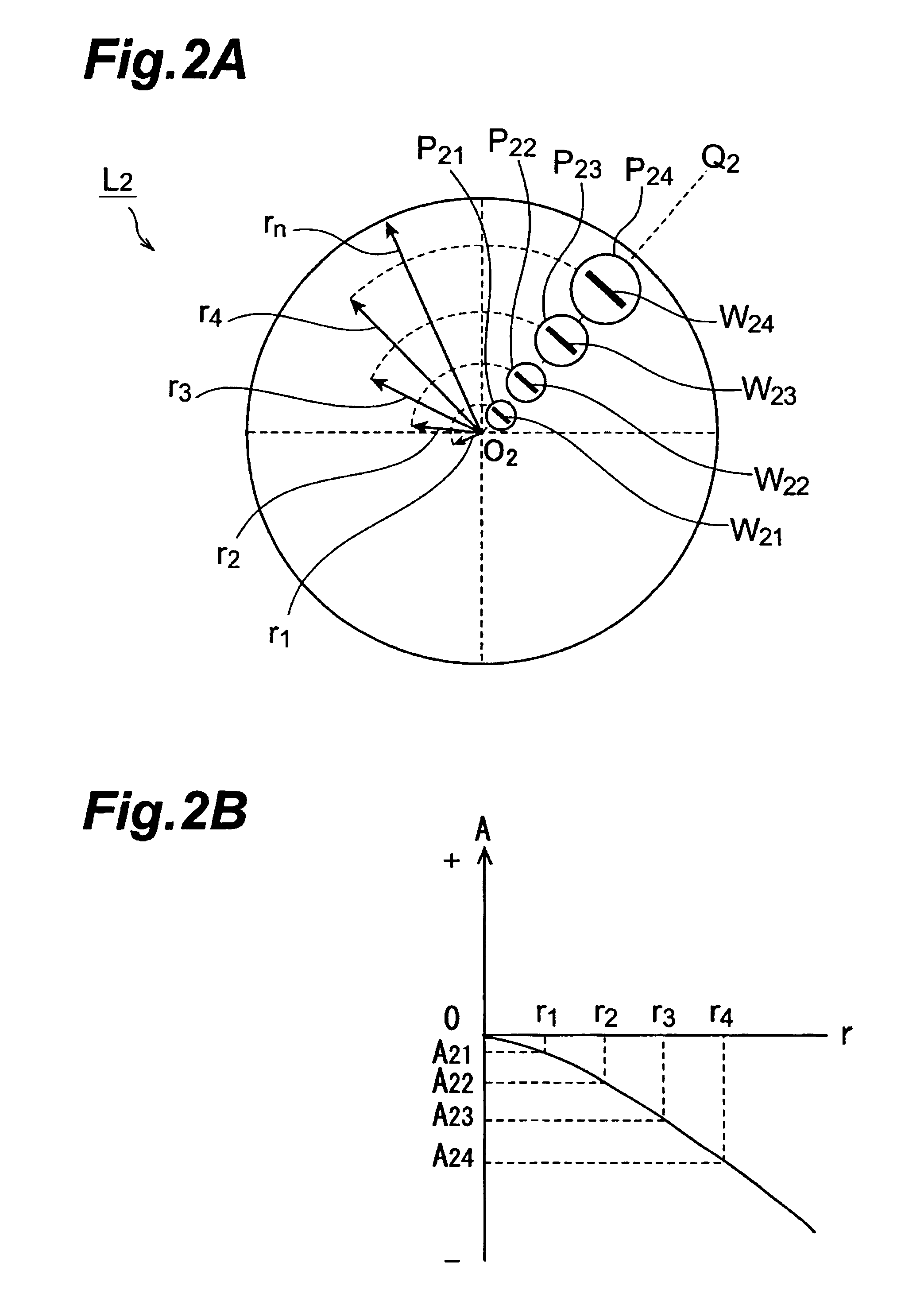Silica glass member, method for producing the same, and projection aligners using the same
a technology of silica glass and projection aligners, which is applied in the direction of glass tempering apparatus, material analysis using wave/particle radiation, glass reforming apparatus, etc., can solve the problems of increasing the transmitting loss of silica glass, insufficient optical transmittance or resistance to ultraviolet radiation, and color center generation, etc., to achieve effective homogenization, effective homogenization, and increase the effect of displacemen
- Summary
- Abstract
- Description
- Claims
- Application Information
AI Technical Summary
Benefits of technology
Problems solved by technology
Method used
Image
Examples
example 2
A silica glass member was produced by direct method (flame hydrolysis) in accordance with the production method with reference to FIG. 6 using a synthetic furnace shown in FIG. 7. Basically, a test piece was produced in the same manner as in Example 1, except for changing the treatment conditions in each of the process steps described in the production method with reference to FIG. 6.
In the step for synthesizing a silica glass bulk, a gas containing gaseous oxygen and gaseous hydrogen at a ratio of 1:3 was ejected from the multi-tubular burner, so as to conduct the combustion in a hydrogen-rich atmosphere as compared with the theoretical air-fuel ratio of 1:2. More specifically, the flow rate of the gaseous raw material was set at 30 g / min, the flow rate of the first gaseous hydrogen was set at 75 slm, the flow speed of the first gaseous hydrogen was set at 52 m / sec, the flow rate of the second gaseous hydrogen was set at 150 slm, the flow speed of the second gaseous hydrogen was se...
example 3
A silica glass member was produced by soot method in accordance with the production method with reference to FIG. 6. Basically, a test piece was produced in the same manner as in Example 1, except for changing the treatment conditions in each of the process steps described in the production method with reference to FIG. 6.
First, in the step for synthesizing silica glass bulk, a porous glass (soot body) 180 mm in diameter and 500 mm in length was obtained by hydrolyzing a silicon compound in an oxyhydrogen flame. The conditions for ejecting the gas from the multi-tubular burner were set to be the same as those generally employed in the soot method. The rotation speed of the target was set at 20 rpm.
The soot body thus obtained was subjected to dehydration treatment at 1100.degree. C. for a duration of 20 hours under a mixed gas atmosphere containing gaseous chlorine and gaseous helium at a ratio of 1:20. Then, the body was subjected to a heat treatment at 1650.degree. C. for a duratio...
PUM
| Property | Measurement | Unit |
|---|---|---|
| specific wavelength | aaaaa | aaaaa |
| specific wavelength | aaaaa | aaaaa |
| temperature | aaaaa | aaaaa |
Abstract
Description
Claims
Application Information
 Login to View More
Login to View More - R&D
- Intellectual Property
- Life Sciences
- Materials
- Tech Scout
- Unparalleled Data Quality
- Higher Quality Content
- 60% Fewer Hallucinations
Browse by: Latest US Patents, China's latest patents, Technical Efficacy Thesaurus, Application Domain, Technology Topic, Popular Technical Reports.
© 2025 PatSnap. All rights reserved.Legal|Privacy policy|Modern Slavery Act Transparency Statement|Sitemap|About US| Contact US: help@patsnap.com



